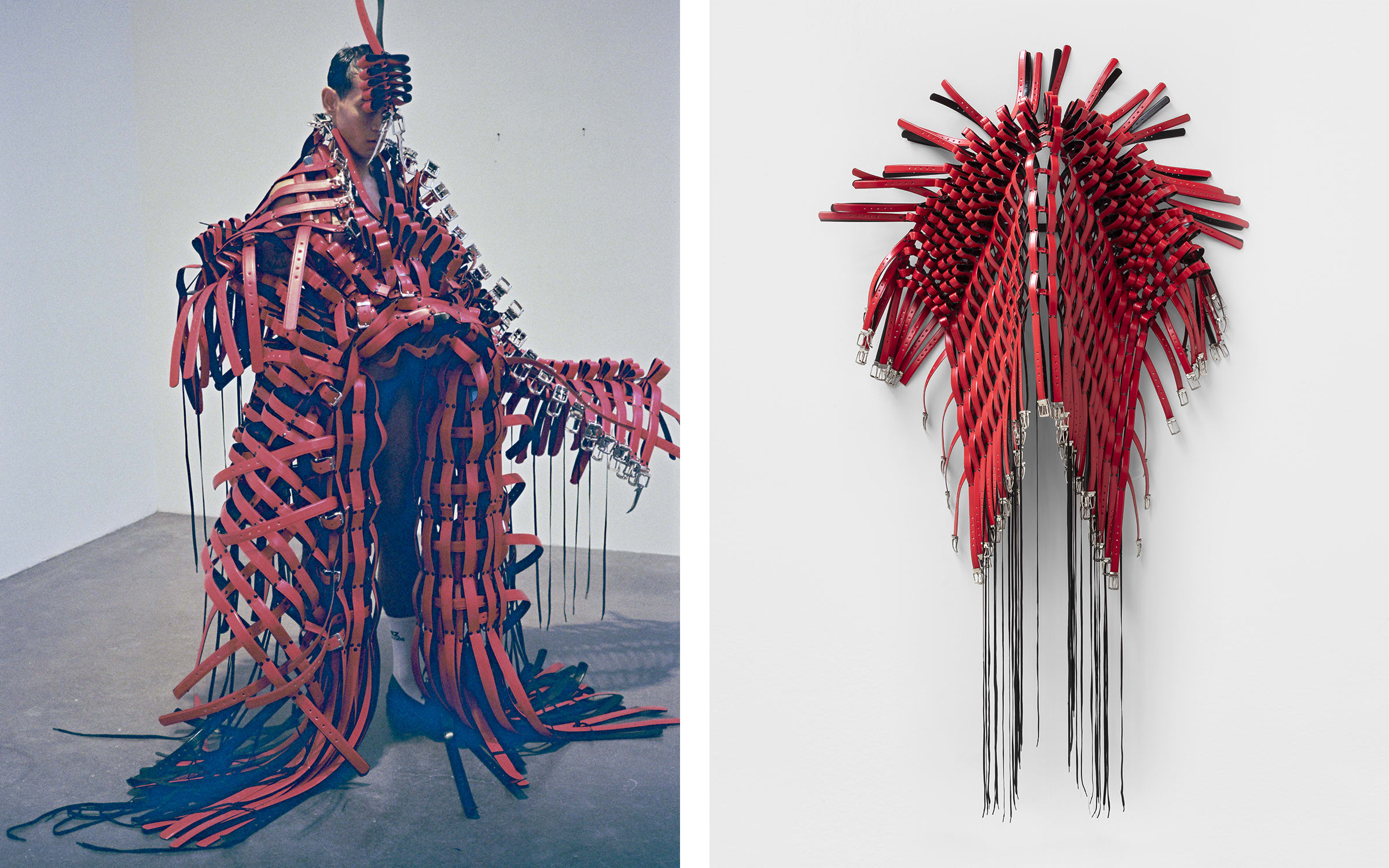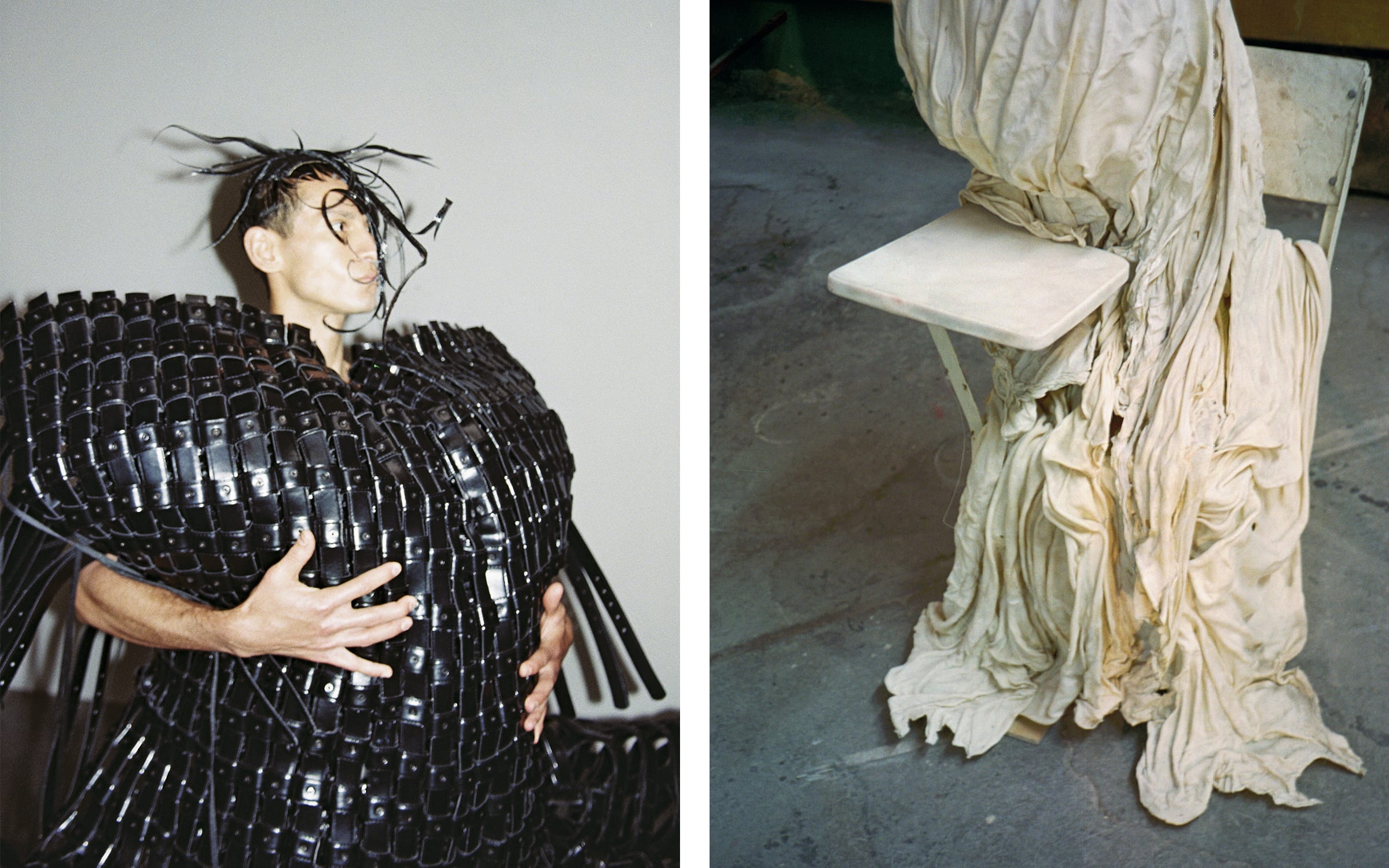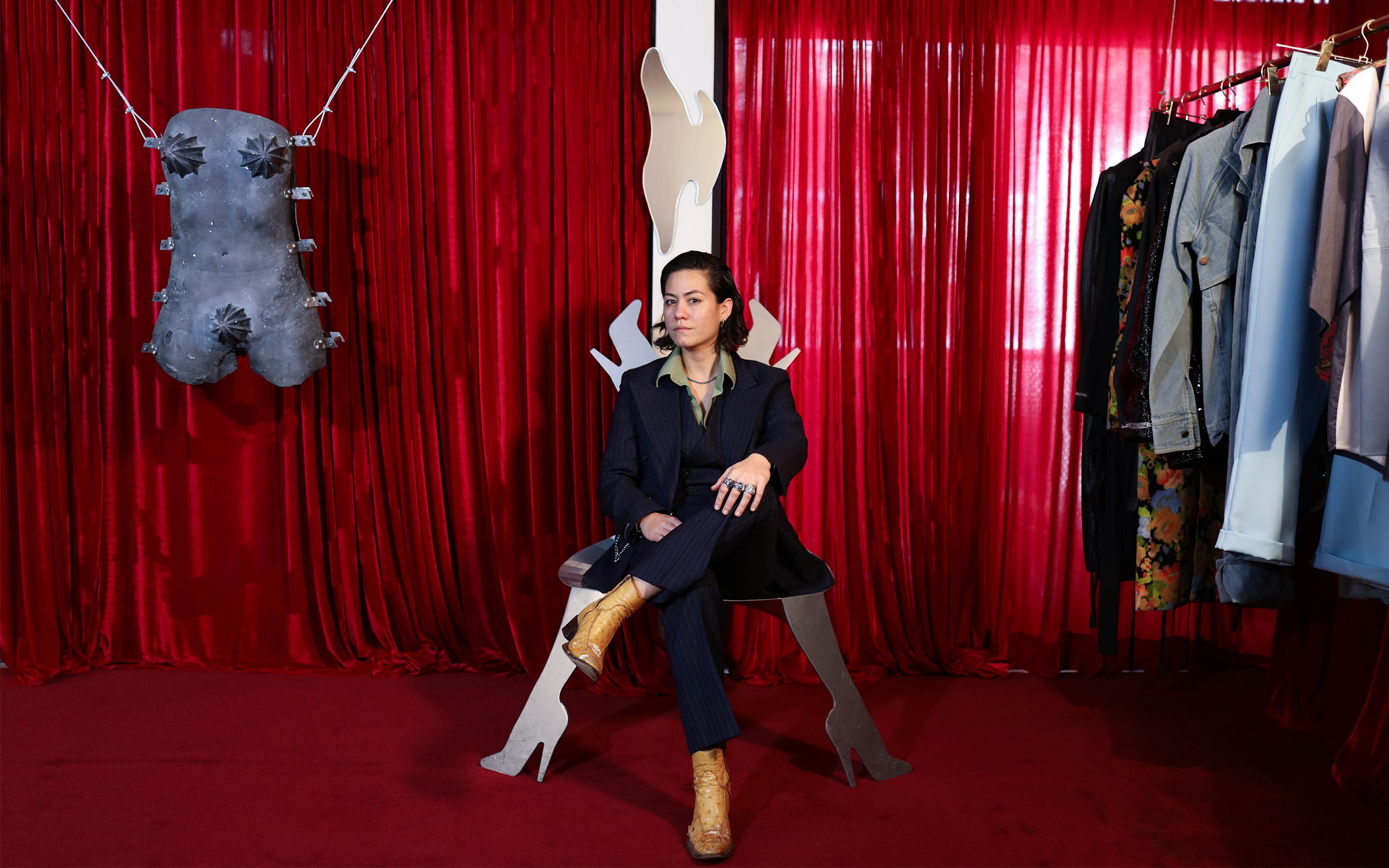Since launching her eponymous label in 2016, Bárbara Sánchez-Kane has tantalized the fashion industry. The 36-year-old artist, who alternatively uses she/he pronouns, has made a name for herself with provocative runway shows, brimming with experimental, often surrealist or political designs that lampoon Mexican stereotypes. This season, however, she has abandoned the traditional fashion week calendar to carve out her own path. ‘The fashion system was not working for me,’ Sánchez-Kane says of both the constant pressure to churn out collections (and the resulting environmental toll), as well as the traditional division between mens- and womenswear. Instead, the Mexico City-based artist has increasingly turned to gallery and performance spaces.

This month, Sánchez-Kane will have her first New York solo show at Mexican gallery kurimanzutto’s Chelsea outpost, which opened in 2022. Titled ‘New Lexicons for Embodiment’, the exhibition examines clothing as a powerful vehicle for self-expression that influences decisions in our daily lives in more ways than we know. Gender fluidity is at the fore of her designs – her ‘macho sentimental’ ethos, for which she has become celebrated, subverts Mexican machismo by embracing peoples’ feminine and masculine sides. However, it isn’t the focus of the New York show. ‘A lot of times my work is reduced to queer or gender issues, but there is more to it than that,’ she says. ‘I mean, I’m not just a queer person, I’m so many other things, and so I want people to question their relationship with clothing, not necessarily in regard to their gender or sexual identity only, or fast fashion or capitalism, but rather through the ways in which we confront the world through the objects around us and what do they mean to us.’ Sánchez-Kane says much of her work boils down to ‘confrontation of and with the body’: ‘how do I drape it? How do I carry it? How do I hide it? What should be seen?
A prime example of the way in which she seeks to ‘disrupt the ritual and rhythm of getting dressed’ are several looks in the show composed of myriad monochromatic belts, which, when hung on the wall, appear like imposing, abstracted animal carcasses. When activated by the body, they become futuristic, vaguely fetishistic garments that seamlessly transition from structured armor to fluid ribbon-like strands that graze the floor. Conceiving clothing like ‘landscapes,’ Sánchez-Kane adores the play of unexpected movement and tension – one can pull on a belt to alter the look’s composition, causing it to expand and contract.
Prior to pursuing a fashion design degree at Florence’s prestigious Polimoda school in 2015, Sánchez-Kane had completed her studies in industrial engineering – thus explaining her flair for unusual construction that challenges clothing’s wearability and functionality. Coming from a family working in the electric power industry, the artist decided to dramatically shift career paths upon being diagnosed with ovarian cancer in her early 20s. She reconsidered and prioritized her creative impulses. It’s the distinct combination of technical propensity and prior lack of exposure to high fashion and art while growing up in Mérida, on Mexico’s Yucatán peninsula, that have inspired Sánchez-Kane to make everyday objects extraordinary, whether they are belts, discarded bottles, or even cinder blocks.

Several works in ‘New Lexicons for Embodiment’ are testament to Sánchez-Kane’s experiments over the last two years with rawhide – that is, animal skins that have not been exposed to tanning. Although rawhide must be manipulated relatively quickly before it dries out, she loves the materials’ mutability. ‘You can collapse it, cover it in paint or chrome, and you can use it as a casting mechanism,’ she says. A standout sculpture appears like draped fabric overflowing onto a student desk, as if poured from midair and defying gravity.
Uniforms are a source of fascination for the artist, both because of her own upbringing in a strict Catholic school and tennis dress codes, and their significance in the history of clothing. ‘One of the first mass-produced types of clothes, ready to wear, were for the military,’ she notes. While one of her edgiest past designs were military uniforms with cutouts exposing the wearer’s backside (further enhanced by red lingerie), ‘New Lexicons for Embodiment’ features a suit-like interpretation in military-green leather, bulbously quilted to create a texture reminiscent of an egg carton.
In the exhibition, the artist has sought to put her own twist on traditional retail environments and display tactics. ‘When you’re walking and you see a store, there’s a confrontation with the window where you think, “am I welcome here?” The same can happen with a gallery,’ explains Sánchez-Kane, acknowledging these barriers to entry, and her hope to blur hierarchical boundaries between fashion and art spaces. ‘Some people who see the exhibition will ask, “is this a collection?” To me, it is a collection.’ Like a designer’s sketch shown alongside the finished piece, the artist has also made paintings for the show incorporating patterns for the garments on display.
While Sánchez-Kane has infiltrated the worlds of fashion and art, she also has her eyes set on music and entertainment. She was recently creative director for the album cover of her friend Mon Laferte, the Grammy-winning alternative Latin pop singer’s forthcoming record, and aspires to produce a ballet where she envisions everything from the sets to the costumes. Fueled by conviction and creativity that know no bounds, Sánchez-Kane is a master of the unexpected whose distinct point of view will undoubtedly shake up many cultural spheres and industries beyond.

Bárbara Sánchez-Kane is represented by kurimanzutto (Mexico City and New York).
The pronoun ‘she’ was used throughout this text for readability.
Stephanie Sporn is a New York-based author, specialized in the intersection between art and fashion.
Published on September 11, 2023.
Captions for full-bleed images, from top to bottom: 1. Bárbara Sánchez-Kane, Untitled, 2023. Courtesy of kurimanzutto. 2. Bárbara Sánchez-Kane, Look 2, 2023. Courtesy of kurimanzutto. 3. Bárbara Sánchez-Kane, Untitled, 2023. Courtesy of kurimanzutto.